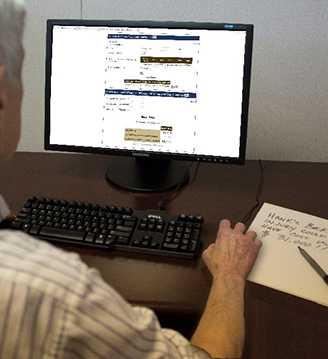NIOSH Web Tool Demonstrates that in Mining, Safety Pays
March 7, 2017
NIOSH Update:
Contact: Stephanie Stevens (202) 245-0641

Mine operators can use Safety Pays in Mining to learn just how much a worker's injury on the job might cost their companies. Credit: NIOSH
Safety Pays in Mining—a new, free web tool from NIOSH—shows mining companies the cost of worker injuries.
This tool offers mining companies information on not only the cost of injury claims, but a few suggestions on how that same money might be spent in other ways.
Preventing injuries saves workers from pain and disability and saves companies money at the same time. Injuries on the job profoundly affect mining companies’ profits and daily operations. In addition to paying direct costs or increased premiums for workers’ compensation insurance, mining companies might need to pay for overtime for other workers to fill an injured worker’s role, cover training costs for a replacement worker or divert administrative resources in the wake of an injury.
With Safety Pays in Mining, mining companies can see in dollars what specific injuries, such as burns, fractures, dislocations and sprains, might cost them—from $1,100 for a knee sprain to more than $15,000 for a broken ankle. Companies can enter their own figures or use the sample values based on past workers' comp claims to show impact to profit margins.
“Injuries on the job can be devastating to a mine worker, but they also affect the workplaces where injuries occur,” said Dr. Jessica Kogel, associate director for mining at NIOSH. "This program is instructional for mining operations, and the message of the web tool is clear: In mining, it pays to invest in injury prevention".
To use the tool, go to www.cdc.gov/niosh/mining/.
NIOSH is the federal institute that conducts research and makes recommendations for preventing work-related injuries, illnesses and deaths. For more information about NIOSH, visit www.cdc.gov/niosh/.
- Page last reviewed: April 28, 2016
- Page last updated: March 10, 2017
- Content source:
- National Institute for Occupational Safety and Health Education and Information Division


 ShareCompartir
ShareCompartir